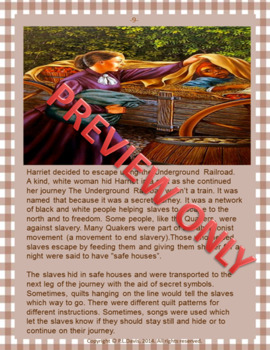

By using railway terms like “stations” and “conductors” they were able to maintain secrecy. Their “railroad without tracks” was run by a network of sympathetic blacks and whites who broke the law to help and hide fleeing slaves. Throughout their journey, they were pursued by slave catchers and others who hoped to collect cash rewards offered for their capture. Runaways were smuggled in hidden compartments of carriages and met in deserted places like cemeteries. They used a boat when they could, to prevent dogs from picking up their scent. Runaway slaves traveled in the woods, at night, navigating by the North Star. (State Dept./Astrid Riecken)īut there was no real train. Born into slavery in Maryland in 1820, Tubman escaped in 1849.

The park attracts visitors from all parts of the globe who are curious about Tubman and the legendary Underground Railroad - a network of secret routes, passageways and safe houses used by slaves seeking freedom.Īngela Crenshaw, the park’s assistant manager, said visitors who are unfamiliar with the history will ask her questions like ‘Where is the station?’ and ‘Where are the tracks?’ Bucktown, Maryland: A pathway leads into the land where Harriet Tubman worked as a slave. Her story as a “conductor” during the 19th century on the “Underground Railroad” is already well known to Americans and is being circulated anew thanks to a historical park that opened in 2017 in the part of rural Maryland where Tubman was born and raised. (State Dept./Astrid Riecken)Īnti-slavery activist Harriet Tubman, who herself escaped brutal slave owners in 1849, will become the first woman and first African American to be featured on a U.S. A photograph of Harriet Tubman is seen at the Harriet Tubman Underground Railroad State Park's Visitor Center in Church Creek, Maryland.


 0 kommentar(er)
0 kommentar(er)
